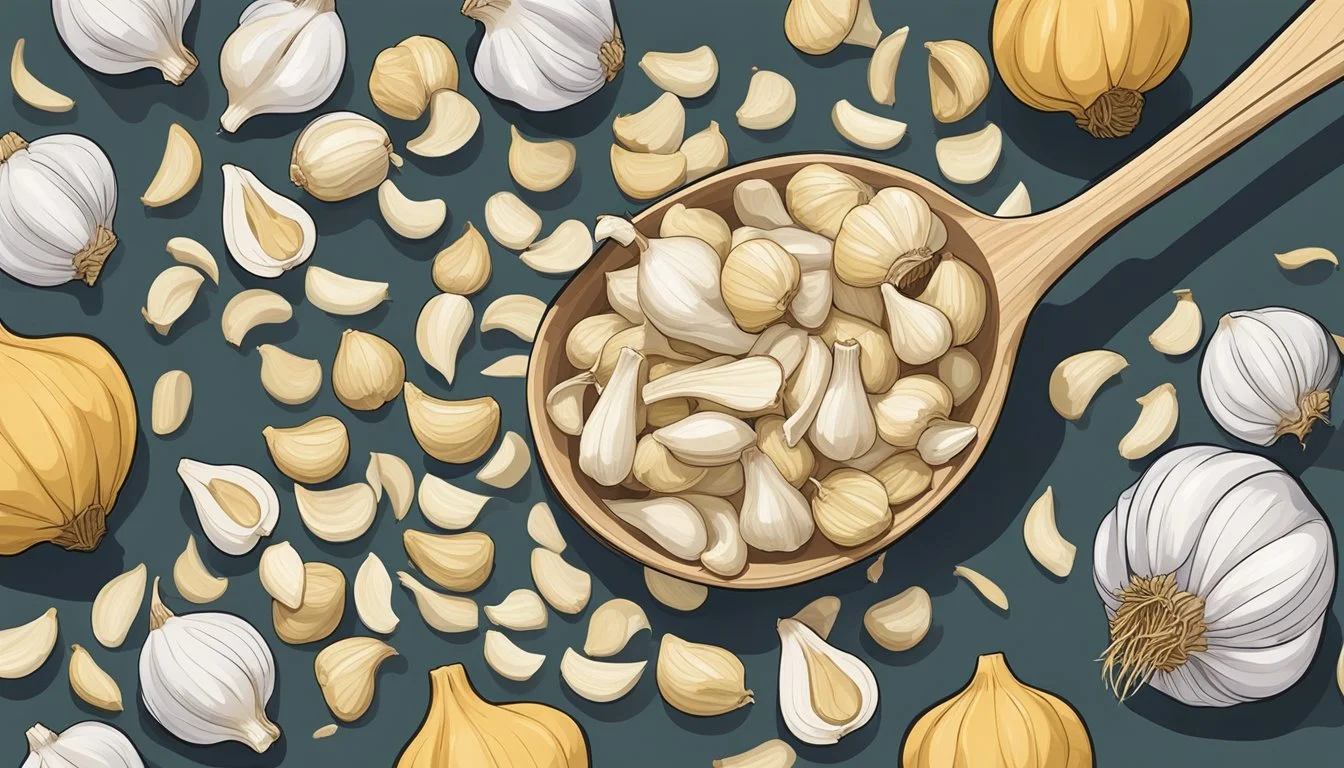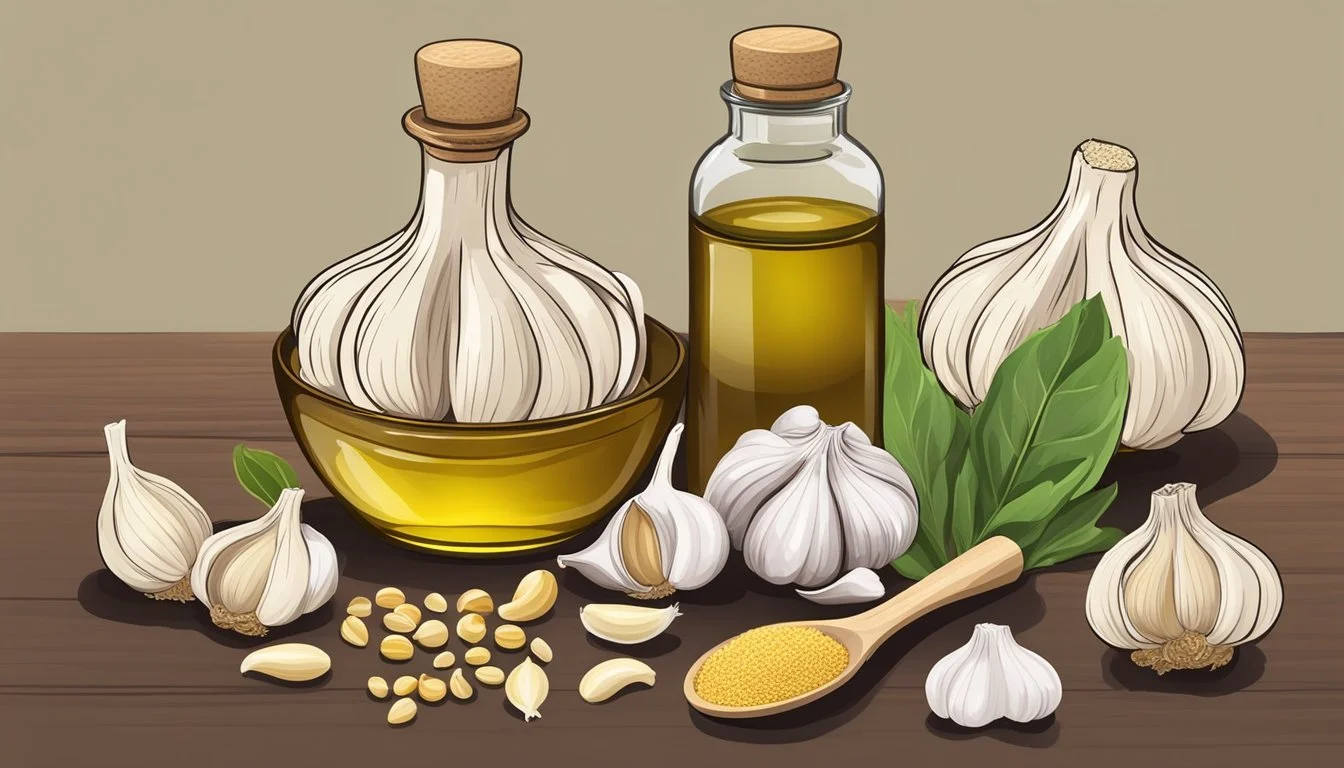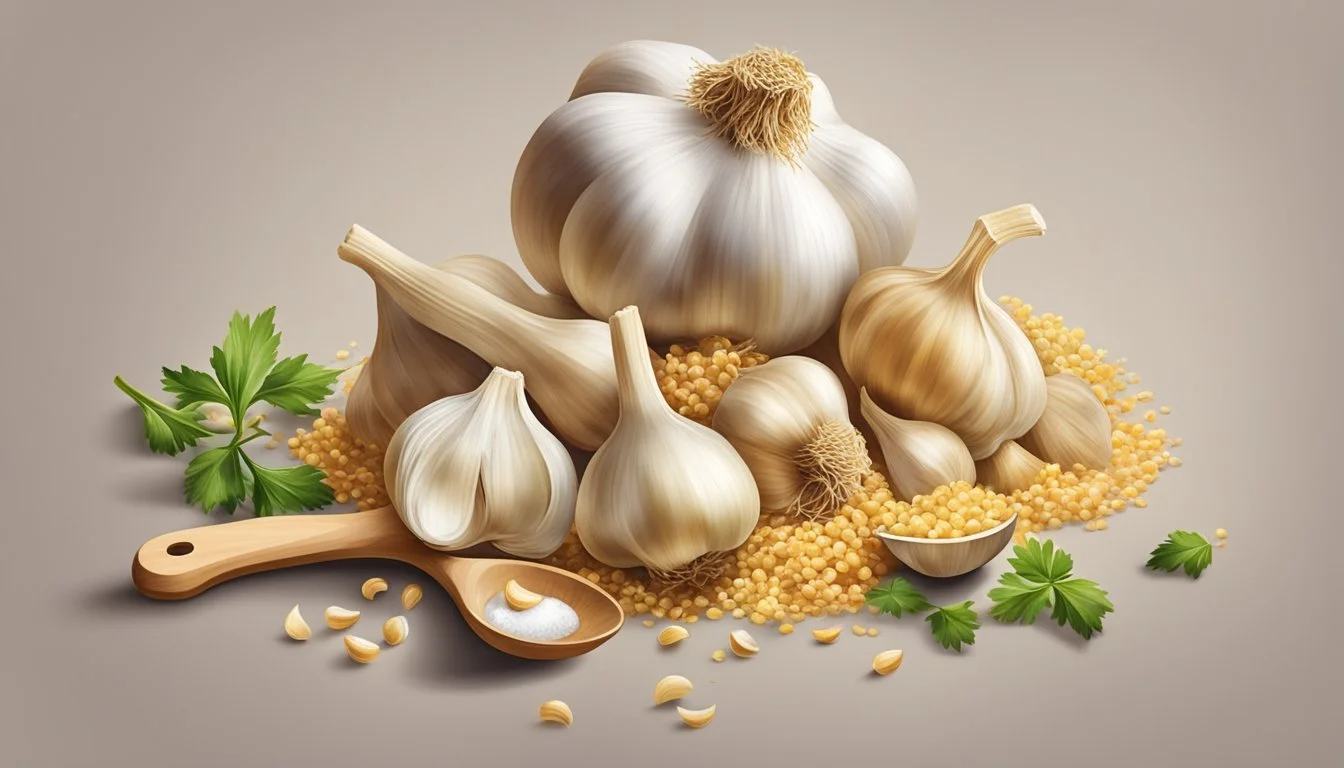How Many Cloves of Garlic Per Day Is Too Much?
Uncovering Safe Limits
Garlic, a common culinary ingredient valued for its flavor and health-promoting properties, is often a subject of interest regarding its optimal daily intake. While incorporating garlic into a daily diet can offer numerous benefits, including supporting cardiovascular health and providing anti-inflammatory effects, there are also potential drawbacks to be mindful of. One of the most prevalent concerns is the appropriate amount of garlic one should consume to reap the benefits without experiencing adverse effects.
The amount that is considered too much can vary depending on individual health factors, but generally, consuming 1-2 garlic cloves per day is deemed beneficial for most adults. This provides a sufficient amount of garlic's active components without overwhelming the body. It's important to note that while garlic is lauded for its health properties, excessive consumption can lead to undesirable side effects such as digestive discomfort, body odor, and in certain cases, increased bleeding risk due to its natural anticoagulant properties.
It is also essential to recognize that garlic's potency can be influenced by how it's prepared and consumed; for instance, raw garlic tends to be more potent than cooked garlic. Individuals with specific health conditions, or those taking certain medications, should consult with healthcare professionals to tailor their garlic intake appropriately. Moderation is key, and understanding the balance between enough and too much is crucial for maximizing the benefits while minimizing potential risks associated with garlic consumption.
Understanding Garlic and Its Components
Garlic is a culinary staple recognized for its distinctive flavor and potential health benefits. A closer look at its nutritional makeup and key compounds helps explain these benefits.
Nutritional Profile of Garlic
Garlic is a low-calorie food with a rich blend of nutrients. One clove of garlic contains approximately:
Calories: 4.5
Protein: 0.2 grams
Carbohydrates: 1 gram
Fiber: 0.1 gram
Fat: Trace amounts
It also contains vitamin C, vitamin B6, magnesium, potassium, iron, and manganese. Each of these plays a critical role in maintaining bodily functions and overall health.
The Role of Allicin in Garlic
When a garlic clove is crushed or chopped, allicin, a sulfur-containing compound, is formed. Allicin is considered to be responsible for garlic's distinctive aroma and much of its therapeutic effect. It contributes to the antimicrobial and antioxidant properties of the garlic, but it is unstable and quickly converts to other sulfur compounds after it's produced.
Sulfur Compounds and Their Effects
In addition to allicin, garlic contains other important sulfur compounds. These include:
Diallyl disulfide
S-allyl cysteine
Diallyl trisulfide
These compounds have been studied for various effects on health, including cardiovascular health, cholesterol levels, and immune response. The presence of these sulfur compounds also contributes to the potential side effects of garlic consumption, such as body odor and digestive discomfort when consumed in excess.
Health Benefits of Garlic
Garlic is renowned for its potential to enhance health, with evidence suggesting benefits ranging from heart health improvement to strong antioxidant and antimicrobial effects. It may also play a role in bolstering the immune system and exhibiting qualities that could aid in cancer prevention.
Garlic's Impact on Heart Health
Garlic is noted for its ability to address cardiovascular issues. Studies indicate that it can lower blood pressure levels and assist in managing cholesterol levels, two critical factors in reducing the risk of heart disease.
Blood Pressure: Regular consumption of garlic could lead to modest reductions in blood pressure.
Cholesterol: It may also decrease cholesterol levels, specifically the harmful low-density lipoprotein (LDL) cholesterol.
Garlic's Antioxidant and Antimicrobial Qualities
Garlic contains compounds with potent antioxidant properties that help in protecting the body against oxidative stress. These antioxidants contribute to:
Neutralizing free radicals, thereby reducing oxidative stress.
Exhibiting antimicrobial and antiviral activity, which can be beneficial against bacteria and viruses, including potential activity against HIV and other viruses.
Garlic in Cancer Prevention and Immune Support
Garlic has been linked to cancer prevention and immune system support. It might have:
Anticancer properties: Components in garlic are being researched for their ability to possibly inhibit cancer cell growth.
Immunity enhancement: Garlic may strengthen immune function by increasing white blood cell production, providing better defense against pathogens.
Culinary Uses of Garlic
Garlic is a versatile ingredient that chefs and home cooks incorporate extensively in various cuisines. It can transform dishes with its potent flavor, whether used raw or cooked, and is a staple in stews and sauces.
Raw Vs. Cooked Garlic
Raw garlic offers a sharp, pungent taste and contains allicin, which provides health benefits. In contrast, cooked garlic mellows in flavor, becoming sweet and less intense. While raw garlic can be minced into dressings or used as a condiment, cooked garlic contributes a foundational flavor to a variety of dishes.
Raw Garlic:
Dressings and Marinades
Condiments (garlic paste, aioli)
Cooked Garlic:
Sautéed with vegetables
Roasted whole in stews and meats
Blended into sauces
Incorporating Garlic in Diverse Dishes
Chefs often use garlic because its flexibility enhances a wide range of dishes. Fresh garlic can be sliced, chopped, or crushed, to control the intensity of flavor it imparts. For stews and slow-cooked dishes, garlic is typically added at an early stage of cooking to meld with other ingredients. For sauces and quick meals, a swift sauté of minced garlic effectively disperses its essence throughout the dish.
Application in Food:
Fresh garlic for a bold flavor
Roasted cloves in stews for depth
Minced in sauces for an aromatic lift
Potential Side Effects and Risks
While garlic is celebrated for its health benefits, it is crucial to consider its potential side effects and risks. Consuming garlic in excessive amounts can lead to several adverse effects, particularly when interacting with certain medications or before surgery.
Gastrointestinal Discomfort and Body Odor
Gas and Bloating: Garlic contains fructans, which can cause gas and bloating, especially for those on a low FODMAP diet.
Bad Breath and Body Odor: Known as 'garlic breath,' the potent odor can persist and is complemented by distinct body odor when consumed in large amounts.
Heartburn and Acid Reflux: Individuals with GERD or acid reflux might experience exacerbated symptoms after consuming garlic.
Garlic's Interaction with Medications and Surgery
Blood Thinning: Garlic has anticoagulant properties, increasing the risk of bleeding, particularly in conjunction with blood-thinning medications.
Surgery Risks: Due to its effect on blood clotting, patients are often advised to avoid garlic prior to surgical procedures to mitigate the risk of excessive bleeding.
Guidelines for Garlic Consumption to Avoid Complications
Moderate Intake: It is generally recommended to limit garlic intake to 1-2 cloves per day.
Special Conditions: People with liver issues, hypertension, or those at risk for Alzheimer's disease should consult healthcare professionals to tailor garlic intake appropriately.
Garlic Supplements and Alternatives
This section explores garlic supplements and their alternatives, focusing on garlic extract and aged garlic, and comparing their characteristics to similar plants like onions, leeks, and chives.
Exploring Garlic Extract and Aged Garlic
Garlic supplements are available in various forms, including garlic extract and aged garlic extract. Garlic extract typically comes from fresh garlic and is most often used for its potential to deliver the benefits of garlic without the pungent odor. Aged garlic extract is made by aging fresh garlic, and this process not only reduces its odor but may also change the composition, potentially enhancing the antioxidants it contains.
Comparison with Onions, Leeks, and Chives
Garlic belongs to the Allium family, along with onions, leeks, and chives, all of which have their health benefits and culinary uses.
Onions: Similar to garlic, but milder in flavor and lower in certain antioxidants.
Leeks: Resemble a milder version of both garlic and onions, with a subtle hint of sweetness.
Chives: Offer a delicate flavor; milder than garlic, used mainly as a garnish or seasoning.
While each of these alternatives to garlic contains health-promoting properties like flavonoids and sulfur compounds, they differ in concentration and potency. Garlic supplements remain a concentrated source to obtain garlic's health benefits without consuming large amounts of the plant itself.
Garlic Dosage Considerations
When considering garlic dosage, individuals should aim for a balance to maximize health benefits while minimizing potential side effects. Dosages vary, but moderation and adherence to recommended amounts are crucial for safety and efficacy.
Daily Intake Recommendations
Humans typically find that consuming 1-2 cloves of garlic daily may offer health advantages, being particularly nutritious due to its bioactive compounds. However, no unanimous guidelines exist concerning the upper limit of garlic intake. To avoid adverse effects, such as bad breath and digestive discomfort, it is advised to enjoy garlic in moderation.
Recommended Daily:
Minimum: 1 clove
Maximum: 2 cloves
Special Considerations for Different Populations
Special caution is necessary for certain groups of people who may have heightened sensitivity to the effects of garlic. This includes individuals on anticoagulants, as garlic can thin the blood in a similar way to aspirin. Those planning surgeries, dental work, or who have bleeding disorders should consult with healthcare providers before consuming garlic. It's also worth noting that the absence of definitive recommendations means that garlic's effects can sometimes be akin to a placebo—results may vary from person to person.
Conclusion
Eating garlic in moderation can contribute to health benefits. The commonly recommended amount is about 1-2 cloves daily. Exceeding this, however, might lead to several undesirable effects such as bad breath, heartburn, and stomach issues. Individuals are urged to adhere to these general guidelines to harness garlic's benefits without experiencing the adverse effects.
Medical professionals highlight that garlic possesses anticoagulant properties, akin to aspirin, thus caution is advised if one is prone to bleeding disorders or is preparing for surgery. There are no definitive guidelines for an upper limit of garlic consumption, but side effects serve as indicators that one might be ingesting more than the tolerable amount.
In terms of nutrition, a serving of three cloves contains approximately:
Calories: 13.4
Protein: 0.572 grams
Carbohydrates: 2.98 grams
Calcium: 16.3 milligrams
Magnesium: 2.25 milligrams
Phosphorus: 13.8 milligrams
Health practitioners recommend that individuals customize their garlic intake based on their specific health conditions and diet. In conclusion, while garlic is a valuable addition to a healthy diet, it should be consumed within reasonable limits.








